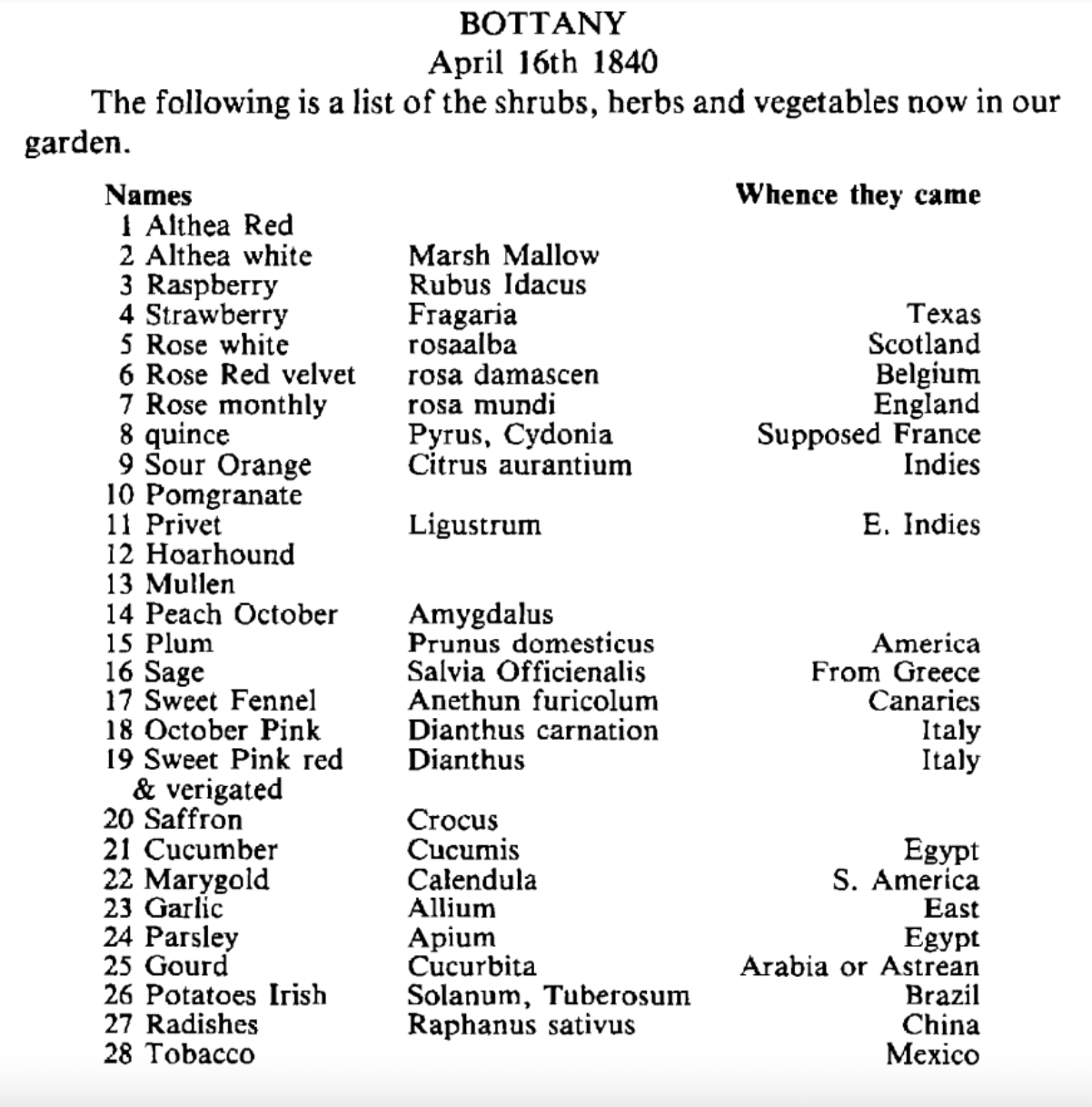Heirloom Plants Tell Stories of History & Heritage
Tales and trails following pioneer gardens.
I love plants — observing them, caring for them, and even eating them.
In fact, my husband at the time, once told me, “I don’t know why you even need a house. You’d rather live in a tent in the garden!” Hmmm…possibly why he’s now an ex-husband.
Vegetables are my number one passion. Right now, I am working on a project to create a Heritage Garden at a local historic farmstead. I plan to grow the plants a mid-1850s farmer would have planted. As I study I find myself drawn back in time, curious about those who gardened in Texas long ago.
We know indigenous people used native plants for food and medicine. Settlers, moving west, brought their favorite plants and seeds. Enslaved people, relocated involuntarily, added okra, peanuts, and more, from Africa and the Caribbean.
The study of heirloom plants is a study of history, geography, and botany.
Another historic farm is located at the Barrington Plantation near Brenham, Texas. This was the original home of Dr. Anson Jones, the last President of the Republic of Texas. It was a working cotton farm, built and worked with enslaved labor. This living history farm uses 19th-century farming practices for planting, cultivating, and harvesting the traditional crops.
Staff and volunteers continue to research the varieties of plants that were grown at that time and I can’t wait to visit.
Fortunately, some historic records exist from that time. Thomas Stuart McFarland (1810–1880) moved to Texas from Louisiana in 1830 with his father, William, and other family members.
The area had been home to scattered remnants of the Kickapoo, Cherokee, Delaware, and Shawnee Indians immigrated from the southern states, as well as transient French and Spanish settlements. William McFarland is credited with establishing the town of San Augustine, under the authority of the Mexican Government, in 1832.
At the age of twenty-two, Thomas McFarland bought 640 acres from Chichester Chaplin for $200. He was an avid gardener and many of his journals are preserved in this online book: Documents: The Gardening Sentiments of an Early Texas Pioneer by Jeffry and Leabeth Abt.
From this book, we can read McFarland’s gardening records.
Thomas McFarland eventually moved to what is now the nearly forgotten ghost town of Belgrade, Texas, on March 1, 1839, and continued gardening.
He wrote of both planting and his deeper thoughts about gardening; perhaps he had an interest in medicine (original spelling).
Commenced the other day to garden, Sowed peas, mustard. Lettuce.
A garden well-cultivated is the most plesant view. the farm can have in the agricultural line.
When the heart is troubled or the mind morose or feverish, a walk in a garden handsomely arranged, is sufficient, to give relief.
The human feelings are such, that every variety of antidote to unhappiness are resorted to by those who suffer, and whilst the mind is capable of acting in concert with reason, we should provide the means of cure before we are attacked by the disease.
We should rather choose some remedy indicated by nature, or at least in which there is no harm, nor abuse of person or intellect that like the vulgar world, to seek the haunts of dissipation & riot; which instead of giving relief to the burthened mind, but adds to the catalogue of misories, and distress and ruin.
A garden has a tendancy to draw the mind from its troubled tho’ts, while at the same time it inspires a love of order and arrangement such as represented on its plan.
DOCUMENTS: THE GARDENING SENTIMENTS OF AN EARLY TEXAS PIONEER by Jeffry and Leabeth Abt
His garden sounds quite similar to the gardens of today.
Thomas McFarland was a surveyor, soldier, and farmer, as were many men at the time. I’m glad his journals were preserved, though many of the exact cultivars he grew are now extinct. When we can find the seeds, they are now referred to as heirloom vegetables. These are the progeny of plants that thrived in a certain area and often are the most well adapted to the specific soil and climate.
On our vegetable farm, over a period of time, we selected for a tasty and hardy variety of arugula that flourished all through the heat and humidity of our central Texas summers. I still maintain the seeds of Phoenix Arugula, named in honor of our home, Phoenix Farms.
I look forward to following more of the trails and tales of Heirloom and Heritage vegetables and sharing their stories.
For updates, subscribe to my brief Writer Weekly.
References:
Abt, Jeffry, and Leabeth Abt. “Documents: The Gardening Sentiments of an Early Texas Pioneer.” East Texas Historical Journal 29 no. 1 (1991): 63–69. (Newton County, TX, 1837–1840)
Burr, Fearing, Jr. The Field and Garden Vegetables of America: Containing Full Descriptions of Nearly Eleven Hundred Species and Varieties; With Directions for Propagation, Culture, and use; Illustrated. 2nd ed. Boston: J. E. Tilton and Co., 1865. Reprint ed. Chillicothe, IL: American Botanist, 1994. [1863 edition available on Kindle for free]
Following

